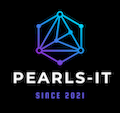IT Support for Education
Our Support for Education
We recognize that every school is unique, and there’s no one-size-fits-all solution. That’s why we’ve developed flexible, scalable, and reliable IT support service packages tailored to your specific needs. We’ll work with you to build a support plan that best serves your staff, teachers, and students.
Depending on your school’s requirements, we can provide either a fully outsourced IT service or collaborative support if you have in-house IT managers and technicians. In both cases, we work closely with your Senior Leadership Team and IT department to introduce new products and services that promote safe, efficient, and cost-effective learning and working environments. Our dedication to understanding your school’s individual challenges ensures our solutions are both effective and sustainable, helping you create an optimal educational experience for students and staff.

Digital Education Platforms
Maintenance of Hardware & Softwares
Our team of IT specialists can spot such problems before they become serious interruptions and expensive downtime by doing routine testing and preventative maintenance procedures. Your business operations will function more smoothly and ultimately save time and money if you keep ahead of the curve. We provide organizations with a range of help options, such as free on-site support for maintenance when problems cannot be fixed online. Furthermore, our committed account management guarantees that your particular requirements are satisfied, fostering your future expansion while preserving a dependable and effective IT infrastructure.
Management of Vendors
Whether you’re looking for cost-effective options or negotiating terms with several third-party technology vendors, working with us can save you time and effort. Our committed account management staff guarantees efficient communication so your company can concentrate on expansion in the future. Our IT specialists’ assistance and knowledge help you better manage your expenses while maintaining access to dependable resources, which improves your overall operational effectiveness.
IT Guidance
As your go-to support provider, we offer professional guidance to resolve problems and help you plan and make wise choices about your IT investments. To make sure that resources are used effectively, we will assess your organization’s needs and objectives with a dedicated account manager.
Our ability to provide remote advise and assistance further improves operational efficiency by enabling us to provide cost-effective solutions and maintain the functionality of your equipment.
1. Canvas: The LMS for Simplified Learning and Enhanced Productivity
Instructure, the company behind Canvas, developed this cloud-based learning management system (LMS) specifically for K-5 through higher education. In just a few years, Canvas has become one of the leading LMS platforms for schools of all sizes, whether they offer small classroom settings or large university environments with hybrid or full-distance learning models.
Canvas is known for its functionality, flexibility, and reliability, making it an ideal solution for fostering easy learning and boosting productivity. Its powerful features have earned it a strong presence, accounting for 21% of schools and 27% of enrollments. In addition to Canvas, Instructure also offers Bridge, an open-source, corporate-focused counterpart.
Key Features:
- Collaborative workspace
- Integrated learning tools
- Easy copy-paste functionality from web browsers
- Personalized content delivery
- Open API for flexibility
- Shared resources and content
- Web conferencing support
- Canvas app center for additional tools
- Graphics analytics and reporting
- Media recording and uploading (audio/video)
- Web-standard browser compatibility
- LTI integrations for seamless learning
- Personalized user profiles
- Audio and video messaging
- Integration with external services
- RSS feed support
- Course notifications
- Robust security features
Canvas offers an intuitive, scalable solution that enhances both learning and teaching experiences across a wide range of educational settings..
Firewalls
Are firewalls in place and configured to protect the organisation’s network from unauthorised access?
Secure configuration
Are systems and devices configured securely to reduce the risk of exploitation?
Security update management
Are security updates applied to systems and devices promptly?
User access control
Are user accounts and permissions managed effectively to prevent unauthorised access to systems and data?
Malware protection
Is malware protection configured effectively to protect the organisation’s network from malware infections?
2. Blackboard Learn: The LMS for Assessment and Content Reporting
Since its introduction in the late 1990s, Blackboard Learn has evolved to serve K-12 schools, higher education institutions, government agencies, military initiatives, and businesses. It can be deployed via SaaS, self-hosting, or managed hosting, and has been updated to work seamlessly on mobile devices.
Blackboard Learn was designed to deliver effective online courses, enabling students to learn with minimal or no in-person meetings. This web-based platform includes a course management system, customizable open architecture, and extensive design features that allow integration with student information systems and authentication protocols. It also supports integration with various business systems and applications like BrainHoney, Epsilen, and Moodle.
Known for its strengths in assessment and content reporting, Blackboard Learn is widely used, with studies showing that 28% of institutions and 37% of enrollments utilize it (Fenton, 2018).
Key Features:
- Content creation and management
- Enhanced student management
- Distance learning classroom capabilities
- Certification administration
- Personalized course options
- Scalable enterprise solutions
- Social learning environments
- Student portfolios and cloud profiles
- Meeting, discussion previews, safe-assign, and scheduling tools
- Strong integration system
- Comprehensive data management
- Group management functionality
- Advanced grading tools
- Blackboard Drive and content editor
- Retention center and program enrollment tracking
- Dynamic content and active collaboration tools
- Intuitive calendar system
- Activity stream for updates
- Gamification features for engagement
Blackboard Learn remains a robust and versatile LMS, offering comprehensive tools for effective learning, assessment, and content management across a range of educational and professional settings.

Benefits of Our Support Services:
IT expertise from specialists in the education sector.
Access to competitive pricing through our trusted partners.
Reduce time spent on IT issues with support from our dedicated team.
Develop a robust IT roadmap to drive future success.
Ensure continuous support even when internal staff are on leave.
All members of our education support team are fully DBS checked.
Choose from dedicated on-site staff or remote support options.
Ready to take the next step in optimizing IT infrastructure?
Make contact with us today to discuss how We can tailor a support package to meet your business’s unique needs and become your support partner.
3. Google Classroom: The LMS for Course Creation
Google Classroom is part of Google Apps for Education, a key component of the tech giant’s application ecosystem. Many consider it the top LMS for schools that are integrated into the Google Workspace (Gerwitz, 2020).
Google Classroom combines powerful educational management tools with exceptional communication features, enabling seamless interaction between educators, students, and parents. Its ease of use and functionality have earned it a reputation as the go-to LMS for course creation.
Google Classroom is designed exclusively for educational environments.
Key Features:
- Accessible via computer, tablet, and smartphone
- Integration with Google Docs for assignments, sharing YouTube videos, and uploading files from Google Drive
- Feedback can be provided through file comments
- Tracks and assigns virtual tasks, ideal for blended learning environments
- Allows creation of online classrooms to share downloadable and viewable instructional materials
- Facilitates online assignments to monitor student performance
- Personalized permissions for screen sharing and secure access
- Enhances online learning using Gmail, Google Docs, Google Slides, Google Drive, and Calendar
- Can push student grades directly to the SIS (Student Information System)
Google Classroom is a versatile and user-friendly platform that simplifies course creation and fosters an efficient learning experience for students and educators alike.

4. Wisenet: Leading Cloud-Hosted Education and Training Platform
With over 20 years of experience, Wisenet offers cloud-hosted solutions tailored for education and training providers. Designed for higher education institutions, short course providers, corporate training, and more, Wisenet’s connected learner management system helps organizations achieve impactful learning outcomes, enhance stakeholder engagement, boost productivity, and drive business growth.
Key Features:
- Asynchronous learning support
- Blended learning capabilities
- Intuitive LMS interface
- Certification and licensing management
- Class registration tools
- Classroom management functionality
- Gradebook for tracking student performance
- Learner portal for easy access to course materials
- Mobile learning compatibility
- SCORM compliance for content integration
Wisenet empowers educational institutions and training organizations to streamline their processes and optimize learning experiences through its comprehensive platform.
5. Workday Student: A Cloud-Based Campus Management Tool
Workday Student is a cloud-based campus management solution designed to bring an entire school together under one user-friendly, configurable platform. It integrates student recruiting, admissions, financials, and curriculum management in a seamless way. The platform also supports application configuration, campaign management, recruitment process improvements, and enrollment status tracking.
Built specifically for academic institutions, Workday Student integrates effortlessly with other Workday solutions such as Human Capital Management, Payroll, Financial Management, and Grants Management.
Key Features:
- Admissions management
- Comprehensive student information system
- Student portal for easy access to resources
- Gradebook for tracking academic performance
- Curriculum management
- Financial aid management
Workday Student helps institutions streamline their campus operations, making it easier to manage both administrative and academic processes efficiently.
6. Nearpod: Interactive Lesson Tool with Collaborative Activities
Nearpod empowers academic institutions to deliver interactive lessons featuring collaborative activities such as quizzes, simulations, virtual reality experiences, and more. This classroom management software enables teachers to host both live and online sessions, providing a versatile teaching environment.
Nearpod includes an activity dashboard where teachers can upload Google Slides, videos, PDFs, PowerPoint presentations, and other content to create engaging lessons. The platform allows for audio responses, real-time student portal checks, and formative assessments to monitor student performance. Teachers can also launch game-based lessons and assess student work through post-session evaluations.
Key Features:
- Class scheduling
- Collaboration tools
- Gamification for engagement
- Classroom management
- Course authoring tools
- Curriculum management
- Assessment management
- Feedback management
- Information hub
- LMS integration
- Mobile app support
- Performance metrics tracking
- Polls/voting functionality
- Real-time data and broadcasting
- Analytics tools
- Self-learning support
- Skills assessment
- Student records management
- Student portal access
- Video support
Nearpod provides an interactive and data-driven platform that enhances teaching and learning, making lessons more dynamic and engaging for students.

7. ClassDojo: Engaging Students and Parents
ClassDojo helps schools engage both students and parents by facilitating communication through customized messages, images, and videos. Teachers can create and share online portfolios, allowing students and parents to log in via QR code to write journal entries, record videos, and submit assignments using images.
The platform enables teachers to share photos, links, files, announcements, and videos through private stories. ClassDojo also offers features such as classroom music, project activity instructions, a noise meter, feedback tools, event sharing, and more. Additionally, the random student generator helps teachers select volunteers during lessons or activities.
Key Features:
- Chat/messaging
- Alerts/notifications
- Class scheduling
- Course management
- Attendance tracking
- Activity tracking and management
- Gradebook
- Real-time monitoring
- Student records management
- Student portal access
ClassDojo enhances classroom engagement by streamlining communication and collaboration, creating a more connected and interactive learning environment for students and parents.
8. SplashLearn: Engaging and Personalized Learning for Pre-K to Grade 5
SplashLearn is an innovative online platform designed for Pre-K to Grade 5 students, combining interactive gameplay with academic excellence. With over 45 million users globally, it offers a fun and engaging approach to education, making lessons both personalized and enjoyable. SplashLearn covers a full curriculum in math and reading, providing tools for parents and teachers to track and support students’ learning progress.
Key Features for Parents:
- Daily personalized learning paths
- Curriculum alignment with school standards
- Engaging interactive games with rewards
- Access to worksheets and live classes
- Multiplayer educational games
Key Features for Teachers:
- Free access to over 11,000 worksheets
- Integration with Google Classroom and Clever
- Tools for tracking student progress
- Free access to home assignments
- Ability to create custom lesson plans
Core Software Features:
- Personalized learning paths based on student needs
- Adaptive algorithms for tailored learning experiences
- Detailed progress reports for parents and teachers
- Cross-platform compatibility for seamless access
- Live tutor-led classes for additional support
SplashLearn creates an engaging learning environment that helps children thrive academically while having fun, offering personalized learning solutions for both home and classroom settings.
9. Dyknow: Monitoring and Managing Students’ Devices
Dyknow helps educators monitor students’ devices, including iPads, Chromebooks, PCs, and MacBooks, to gain valuable insights into their online activities during class. It allows teachers to track internet usage and block distracting or inappropriate content, enhancing classroom focus and performance.
In addition to monitoring, Dyknow assists teachers in preparing tests and assessments. Its extensive software database offers a wide range of questions across various subjects and difficulty levels, helping teachers create effective evaluations. After assessments, teachers can choose to reveal answer keys or host Q&A sessions. Dyknow also provides access to online tutorials for student review before annual assessments.
Key Features:
- Class scheduling
- Collaboration tools
- Communication management
- Intuitive LMS interface
- Test and assessment creation
- Student records management
- Support for audio, image, and video materials
- Learning and skills assessment tools
- Assessment management
- Discipline management
- Compliance management
- Records management
- Student monitor view
- Application and website blocking
- Internet usage tracking
- Real-time monitoring and reporting
- Data import/export functionality
- API and access control options
Dyknow provides educators with a comprehensive toolset for monitoring, managing, and enhancing student engagement and performance in the classroom.
10. Socrative: Enhancing Teaching and Learning
Socrative is a quiz-based, formative assessment software designed to enrich teaching and learning environments. It allows teachers to create quizzes, exit tickets, and other assessments to collect and review student data in real-time, enabling them to make immediate adjustments to improve learning outcomes. Students do not need accounts to participate; teachers can simply provide a URL for students to access the quiz or assessment.
Socrative is accessible across various platforms, including Chrome, Windows, and Apple, and works on smartphones, tablets, and desktops without the need for downloads.
Key Features:
- Virtual computer monitoring
- Interactive quizzes for engagement
- Administering and gathering student assignments
- Real-time progress reporting
- Access to shared content libraries
- A variety of question formats
- Real-time assessments with immediate feedback
- Automated grading to save time
- Gamification elements to boost student participation
- Comprehensive analytics dashboard for insights
- Detailed reporting for tracking student progress
Socrative provides teachers with powerful tools to enhance their instruction, promote interactive learning, and track student performance effectively.

- Why is cybersecurity important for educational institutions?
Answer: Cybersecurity protects sensitive student, faculty, and institutional data from cyber threats, ensuring privacy and continuity of operations in schools, colleges, and universities.
- What types of data need protection in educational institutions?
Answer: Personal data (like names, addresses, and social security numbers), academic records, financial information, and research data all need protection from cyber threats.
- What are the common cybersecurity threats faced by schools?
Answer: Phishing attacks, ransomware, data breaches, and attacks on online learning platforms are common cybersecurity threats in educational environments.
- How can schools prevent phishing attacks?
Answer: Schools can prevent phishing by training staff and students to recognize suspicious emails, using email filters, and implementing multi-factor authentication for accounts.
- What is ransomware, and how does it affect educational institutions?
Answer: Ransomware is malware that locks systems or data until a ransom is paid. It can disrupt educational operations, compromise data, and result in significant financial loss.
- Why is student data so valuable to cybercriminals?
Answer: Student data includes personal information, academic records, and financial data, making it highly valuable for identity theft, fraud, or resale on the dark web.
- How can educational institutions protect student data?
Answer: By encrypting sensitive data, implementing strong access controls, regularly updating software, and educating staff and students about data privacy.
- What role does encryption play in protecting educational data?
Answer: Encryption ensures that even if sensitive data is intercepted or stolen, it cannot be read or used without the decryption key.
- How do schools ensure the security of their online learning platforms?
Answer: By implementing secure logins, using end-to-end encryption, regularly updating the software, and monitoring platforms for unusual activities.
- What is the role of firewalls in school cybersecurity?
Answer: Firewalls protect networks by filtering out harmful traffic and preventing unauthorized access to the institution’s systems and data.
- How can multi-factor authentication enhance cybersecurity in education?
Answer: Multi-factor authentication adds an extra layer of security by requiring users to provide two or more forms of identification, such as a password and a fingerprint, to access systems.
- What is the importance of cybersecurity training for teachers and staff?
Answer: Training helps educators and staff recognize cyber threats like phishing emails, practice secure password management, and follow best practices for data protection.
- How can students be educated about cybersecurity risks?
Answer: Students can be educated through workshops, seminars, online courses, and incorporating cybersecurity awareness into the curriculum.
- How can cybersecurity policies help educational institutions?
Answer: Cybersecurity policies set clear guidelines for data handling, access control, and incident response, helping institutions manage security risks and protect sensitive information.
- How can schools protect their networks from DDoS attacks?
Answer: Schools can use DDoS mitigation services, implement traffic monitoring, and set up redundant systems to ensure network availability during an attack.
- What is the role of secure Wi-Fi in school cybersecurity?
Answer: Secure Wi-Fi ensures that unauthorized individuals cannot access the school’s network, protecting sensitive data and systems from cyberattacks.
- How can schools secure their websites?
Answer: Schools should use HTTPS, regularly update website software, implement web application firewalls, and monitor for vulnerabilities.
- What is an advanced persistent threat (APT), and how can it affect schools?
Answer: APTs are long-term, targeted cyberattacks that aim to steal data or cause damage. Schools can protect against APTs by using advanced threat detection systems and secure network architecture.
- How can educational institutions secure their cloud storage?
Answer: By encrypting data, enabling multi-factor authentication, and ensuring compliance with data protection regulations like GDPR or FERPA.
- How does cybersecurity help protect online testing platforms?
Answer: Cybersecurity protects online testing platforms from cheating, data breaches, and unauthorized access, ensuring the integrity and privacy of student assessments.
- What is the importance of a cybersecurity incident response plan?
Answer: An incident response plan outlines the steps to take when a security breach occurs, minimizing damage, ensuring recovery, and protecting against future attacks.
- How can schools prevent unauthorized access to their networks?
Answer: By using strong passwords, role-based access control, network segmentation, and monitoring for unusual network activity.
- What is the importance of regular software updates for cybersecurity?
Answer: Regular software updates patch vulnerabilities that could be exploited by cybercriminals, ensuring the security of educational systems and applications.
- What are the best practices for password management in schools?
Answer: Use strong, unique passwords for each account, implement password management tools, and require multi-factor authentication for access to sensitive systems.
- How do cyberattacks affect the reputation of educational institutions?
Answer: A successful cyberattack can damage the institution’s reputation, erode trust among students and parents, and potentially lead to legal and financial consequences.
- What are the risks of using unsecured third-party educational apps?
Answer: Unsecured apps can expose sensitive data to cybercriminals, lead to breaches of student privacy, and introduce malware into the institution’s network.
- How can schools secure their student’s personal devices?
Answer: Schools can provide security guidelines, enforce the use of security software, and encourage students to use strong passwords and secure networks on their personal devices.
- How can educational institutions prevent data breaches?
Answer: By conducting regular risk assessments, using strong encryption, ensuring access control, and educating employees and students about safe data practices.
- How can artificial intelligence help in protecting educational institutions?
Answer: AI can detect unusual activity, identify potential threats, and automate threat response, helping institutions quickly identify and mitigate cyberattacks.
- What is the role of network segmentation in education cybersecurity?
Answer: Network segmentation divides a network into smaller, isolated segments, limiting access to sensitive data and preventing widespread attacks.
- What is the importance of backup systems in case of cyberattacks?
Answer: Backup systems ensure that critical data can be restored in the event of a cyberattack, such as a ransomware attack, minimizing downtime and data loss.
- How can schools secure their mobile devices against cyber threats?
Answer: By using mobile device management (MDM) tools, enforcing strong passwords, enabling encryption, and installing security software.
- What is the role of data loss prevention (DLP) systems in education?
Answer: DLP systems monitor and prevent the unauthorized transfer of sensitive data, ensuring that confidential student and faculty information is protected.
- How can schools ensure compliance with data protection regulations?
Answer: Schools can ensure compliance by following guidelines like FERPA (Family Educational Rights and Privacy Act) and GDPR, implementing proper data handling practices, and conducting regular audits.
- What are the risks of unsecured online collaboration tools?
Answer: Unsecured tools can expose sensitive information, leading to data leaks, unauthorized access, and increased vulnerability to cyberattacks.
- How can educational institutions implement secure communication channels?
Answer: By using encrypted email, secure messaging apps, and virtual private networks (VPNs) to protect communication within the institution.
- What is the role of cybersecurity audits in educational institutions?
Answer: Cybersecurity audits help identify vulnerabilities, assess security measures, and ensure compliance with regulations, allowing schools to proactively address weaknesses.
- How can schools protect their research data from cyber threats?
Answer: By encrypting research data, limiting access to authorized personnel, and using secure storage solutions like encrypted cloud services.
- Why is cybersecurity important for protecting remote learning environments?
Answer: Remote learning platforms are vulnerable to cyberattacks. Ensuring their security is essential to protect student data, prevent disruptions, and maintain educational integrity.
- How can schools prevent unauthorized access to online learning resources?
Answer: By using authentication systems, encrypting sensitive resources, and ensuring that only authorized users have access to educational materials.
- How does cybersecurity contribute to academic integrity?
Answer: Cybersecurity measures protect online exams, assignments, and research from cheating, plagiarism, and unauthorized access, ensuring fair and accurate academic evaluations.
- What is the role of cybersecurity in preventing online harassment?
Answer: Cybersecurity helps protect students from cyberbullying, harassment, and exploitation by securing communication platforms and online environments.
- How can schools ensure the privacy of students during online classes?
Answer: By using encrypted video conferencing tools, restricting access to online classes, and educating students about online privacy and security practices.
- How can cybersecurity protect against cyberstalking in educational settings?
Answer: Cybersecurity tools, such as secure communication platforms and monitoring systems, can help prevent and address instances of cyberstalking by protecting student data.
- How can schools secure their digital library systems?
Answer: By using encryption, access control, and regularly updating software, schools can protect their digital library systems from unauthorized access and cyber threats.
- What is cybersecurity hygiene, and why is it important for schools?
Answer: Cybersecurity hygiene involves practicing good security habits, like using strong passwords and keeping software updated, to reduce the risk of cyberattacks.
- How can schools handle cybersecurity incidents effectively?
Answer: By having a well-defined incident response plan, training staff on how to respond to breaches, and quickly implementing recovery measures.
- How can cybersecurity protect research collaborations between institutions?
Answer: By ensuring secure communication channels, encrypted file sharing, and controlled access to sensitive research data.
- How do cyberattacks impact the reputation of educational institutions?
Answer: A cyberattack can damage an institution’s reputation by eroding trust, causing financial losses, and leading to legal and regulatory consequences.
- How can educational institutions build a culture of cybersecurity?
Answer: By educating students, staff, and faculty, implementing strong policies, and promoting good cybersecurity practices throughout the organization.
